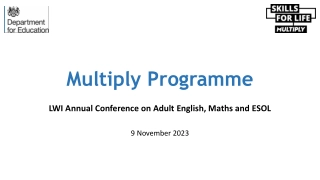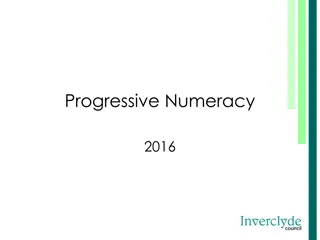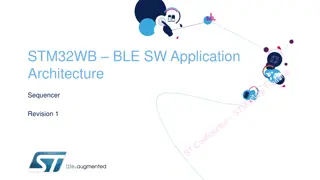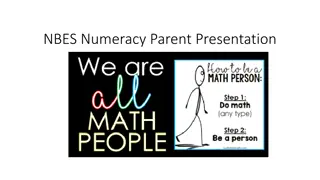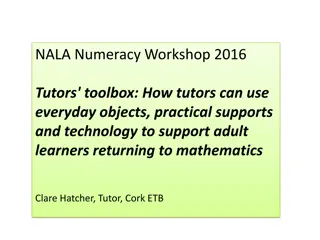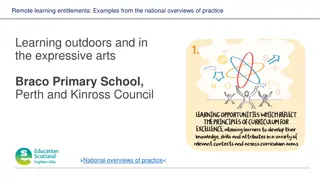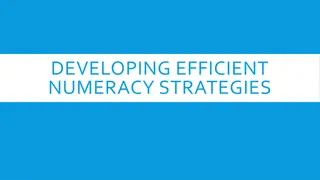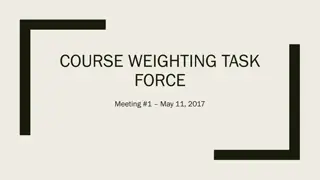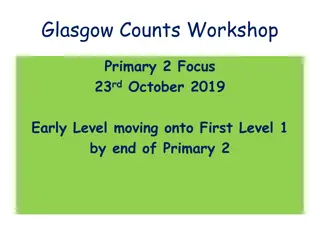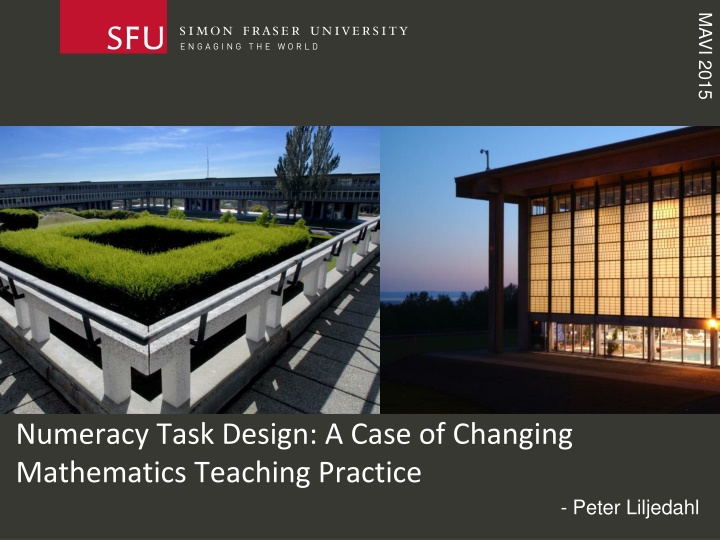
Exploring Changes in Mathematics Teaching Practice: MAVI 2015 Study
Discover insights from the MAVI 2015 study on transforming mathematics teaching practices. Explore the challenges faced by teachers, the nature of changes in their thinking, and the mechanisms driving these changes. Dive into the realm of numeracy and mathematical literacy as educators adapt to evolving pedagogical demands and engage with contemporary teaching methods.
Download Presentation

Please find below an Image/Link to download the presentation.
The content on the website is provided AS IS for your information and personal use only. It may not be sold, licensed, or shared on other websites without obtaining consent from the author. If you encounter any issues during the download, it is possible that the publisher has removed the file from their server.
You are allowed to download the files provided on this website for personal or commercial use, subject to the condition that they are used lawfully. All files are the property of their respective owners.
The content on the website is provided AS IS for your information and personal use only. It may not be sold, licensed, or shared on other websites without obtaining consent from the author.
E N D
Presentation Transcript
MAVI 2015 Numeracy Task Design: A Case of Changing Mathematics Teaching Practice - Peter Liljedahl
MAVI 2015 Liljedahl, P. (2015). Numeracy Task Design: A Case of Changing Mathematics Teaching Practice. ZDM: The International Journal on Mathematics Education, 47(4), 625-637.
MAVI 2015 Numeracy Movement
MAVI 2015 efforts to intensify attention to the traditional mathematics curriculum do not necessarily lead to increased competency with quantitative data and numbers. While perhaps surprising to many in the public, this conclusion follows from a simple recognition that is, unlike mathematics, numeracy does not so much lead upwards in an ascending pursuit of abstraction as it moves outward toward an ever richer engagement with life's diverse contexts and situations. (Orrill 2001, p. xviii) Numeracy Movement
MAVI 2015 Mathematical literacy is an individual's capacity to identify and understand the role that mathematics plays in the world, to make well-founded mathematical judgments and to engage in mathematics, in ways that meet the needs of that individual's current and future life as a constructive, concerned and reflective citizen. (OECD, 2003, p.14) Numeracy Movement
MAVI 2015 what are the experiences of mathematics teachers as they struggle to make sense of these emergent, and ill-supported, demands? what is the nature of any of the resultant changes they may undergo in their thinking about mathematics and teaching of mathematics and what are the mechanisms of these changes? Research Questions
MAVI 2015 CONTENT knowledge (Hill, Ball, & Schilling, 2008; Davis & Simmt, 2006) beliefs (Liljedahl, 2009, 2007; Liljedahl, Rolka, R sken, 2007) discontinuity with practice (Cooney, 1985; Skott, 2001) METHOD action research (Jasper & Taube, 2004) lesson study (Stigler & Hiebert, 1999) communities of practice (Little & Horm, 2007; McClain & Cobb, 2004; Wenger, 1998) collegial discourse (Lord, 1994) EFFECTIVENESS robustness (Lerman & Zehetmeir, 2008) Teacher Change
MAVI 2015 Content knowledge (Hill, Ball, & Schilling, 2008; Davis & Simmt, 2006) beliefs (Liljedahl, 2009, 2007; Liljedahl, Rolka, R sken, 2007) Discontinuity with practice (Cooney, 1985; Skott, 2001) With time and continued intervention, support, and collaboration teachers can make significant and robust changes to their practice. Method action research (Jasper & Taube, 2004) lesson study (Stigler & Hiebert, 1999) communities of practice (Little & Horm, 2007; McClain & Cobb, 2004; Wenger, 1998) collegial discourse (Lord, 1994) Effectiveness robustness (Lerman & Zehetmeir, 2008) Teacher Change
MAVI 2015 Liljedahl, P. (2010). Noticing Rapid and Profound Mathematics Teacher Change. Journal of Mathematics Teacher Education, 13(5), 411-423. 1.conceptual change 2.accommodating outliers 3.reification 4.leading belief change 5.push-pull rhythm of change Rapid and Profound Change
MAVI 2015 comes from the science education literature has been applied to the learning of mathematics (Greer, 2004; Tirosh & Tsamir, 2004; Vosniadou, 2006; Vosniadou & Verschaffel, 2004) not a theory that applies to learning in general highly situated, applicable only in contexts where: 1. misconceptions are formed through lived experiences and in the absence of formal instruction 2. there is a phenomenon of concept rejection 3. there is a phenomenon of concept replacement (Vosniadou, 2006) CERME (2007); MAVI (2011) Conceptual Change
MAVI 2015 born from the work of Piaget (1968) explains instances in which teachers are able to keep various aspects of their practice and experiences disjoint from each other when asked to consider these experiences in unison, a process of accommodation may occurs, resulting in new views on teaching and learning mathematics Accommodating Outliers
MAVI 2015 borrowed from the work of Wenger (1998) explains the observed phenomenon wherein a teacher makes rapid changes to their practice after participating in a process in which they give form to [their] experiences by producing objects that congeal this experience into thingness (Wenger, 1998, p. 58) MAVI (2007); PME (2007) Reification
MAVI 2015 acknowledges that teachers practice is not distinct from their beliefs about teaching and learning mathematics (Ball, 1988; Chapman, 2002; Fosnot, 1989; Lortie, 1975; Skott, 2001) these beliefs do not exist in isolation from each other they cluster together along lines of relevance to form belief systems (Chapman, 2002; Green, 1971) changes to one belief can cause a significant and rapid change in beliefs about teaching and learning Leading Belief Change
MAVI 2015 in some cases, teacher change goes through a period of tension wherein teachers: 1. teachers work on an activity they see as lying outside of themselves 2. when they realize that it pertains to themselves they resist changes by railing against the institutional systems in which they are working and their inability to change it 3. they then suddenly collapse their focus down to the confines of their classroom a domain in which they do have the ability to make change 4. finally, there is a shift of attention from the classroom down to the plight of individual students CERME (2009) Push Pull Rhythm of Change
MAVI 2015 Methodology the project
MAVI 2015 Numeracy Task Design Team Design two numeracy tasks to be used to assess numeracy skills across the district. Methodology the project
MAVI 2015 1st Meeting: what is numeracy? think of a student that you have taught that you believed to be exceptionally numerate - what qualities did that student possess that made them numerate? what should a numeracy task should look like? 2nd Meeting: began to design a number of preliminary numeracy tasks for the teachers to take away and test with their own students 3rd 5th Meeting: debriefed the teachers' experiences in implementing the tasks refine (or redesign) the tasks 6th Meeting: finalize the wording and formatting of the two tasks write a script to help teachers implement the tasks Methodology the project
MAVI 2015 Methodology sample task
MAVI 2015 FACILITATOR & researcher noticing (Liljedahl, 2010; Sherin, Jacobs, and Philipp 2011) DATA COLLECTION field notes interviews class visits DATA ANALYSIS analytic induction (Patton, 2002) Rapid and Profound Change numeracy movement emergent themes ANALYSIS DATA FACILITATOR & researcher Methodology the data
MAVI 2015 Frank is a middle school teacher with 12 years of teaching experience who classifies himself as a social studies and language arts specialist. From the beginning he positioned himself within the group as the person who has never attended a mathematics workshops or been part of a design team and that he was "just keen to learn". Frank came to the numeracy design team because he has become increasingly unhappy with his students performance in mathematics and his inability to "put his finger on what is wrong". The Case of Frank
MAVI 2015 Frank had no initial ideas of what numeracy was or, at least, none that he would offer. When the discussions about the qualities of numerate persons began Frank eventually began to talk about students who "just get it". What are we doing in math if we are not working on these things? I see students every year who have all the facts, but if I ask them what 2 + 3 is they can't answer without writing something down. What are we doing to kids when they can sit and multiply out three digit numbers but they can't think clearly about simple everyday concepts? The Case of Frank
MAVI 2015 During the pilot testing process, Frank was bothered by the poor performance of the majority of his students. At the same time, he was worried by the lack of challenge for some of his top students. The design team had been working hard to ensure that the task allowed every student to start. All my students were able to start. This is not the problem. The problem is that my weak students were too challenged and my really strong students are not being challenged enough. Somehow, we need to make the task harder without making it harder. The Case of Frank
MAVI 2015 The task design process reified Frank's thinking into the activity of problem solving, which Frank realized his students had been missing in their experiences. He began asking me for problems and resources of problems which he then began using almost exclusively within his teaching. At the same time he began problematizing everyday occurrences in his classroom. I realize that I make lots of numeracy-like decisions every day within my teaching, and that if I start getting my students to make some of these then they will start to really experience numeracy at its best. So, for example, last week it was time to start basketball in PE. Normally, I make teams at the beginning of a unit and then those teams stay together for the whole unit. Well, rather than making the teams myself I put the students in groups and told them to come up with a proposal for who should be on what team so that the teams are fair. It turned into a whole week project. The Case of Frank
MAVI 2015 REIFICATION problem solving is missing just get it need to challenge my student ACCOMMODATING OUTLIERS LEADING BELIEF CHANGE The Case of Frank
MAVI 2015 Victoria is the only member of the design team who has a degree in mathematics and has been trained as a mathematics teacher. Victoria is a former high school teacher with 8 years teaching experience. At the time of the research, she had recently started teaching grade 8 at a middle school where her teaching partners had gladly given her all of the mathematics and science courses to teach. The Case of Victoria
MAVI 2015 Victoria has come to the design team with very strong traditional views about what numeracy is and what a numeracy assessment should look like. Isn't numeracy just basic number facts? So, a numeracy assessment should just be a test of basic facts. We really need this in this district. That is why I am here. When I asked the group to think of qualities of a numerate student Victoria' answer did not mention basic facts. I taught a boy last year who was so good. He could solve things in more than one way. He could explain his thinking. And he was always trying to make connections to other things we had learned. As much as Victoria valued fluency of basic facts, she also seemed to value the more diverse skills of "making connections" and "solving things in more than one way". The Case of Victoria
MAVI 2015 During the task design work of the design team the diverse skills that Victoria valued were reified into a desire to have students produce multiple solutions. This view was refined further after pilot testing the numeracy tasks with her own students something she mistakenly thought would go well. I guess my students are used to more structured problems. My problems tend to be linked more closely to specific things I am teaching. The Case of Victoria
MAVI 2015 Victoria realized that the connectedness she was looking to impart in her students was not possible through her current teaching methods. I really do value multiple solution methods and I want my students to see that there is often more than one way to do things. So, I always teach them how to do things in more than one way. And then what I want to see is that my students can do these multiple ways that I have shown them. This numeracy task requires something completely different form the students. This isn't about me having shown multiple ways. This is about students being able to identify how to solve it for themselves. They just don't have any experience doing this. The Case of Victoria
MAVI 2015 This realization shifted Victoria's thinking to a new belief of teaching in which students needed to "identify how to solve [problems] for themselves". This new belief about what students need to be able to do, led in turn, to new beliefs about what it means to teach and learn mathematics. In particular, that she needs to stop being so directed in her teaching and offer, instead, opportunities for students to "figure it out on their own". Over the course of the design team this led to a wholesale reformulation of Victoria's teaching style. Instead of teaching first and then giving them questions second I give them the questions first. I just do my lesson backwards. The Case of Victoria
MAVI 2015 REIFICATION this isn t about me showing them multiple ways solving things in more than one way multiple solutions is important ACCOMMODATING OUTLIERS LEADING BELIEF CHANGE The Case of Victoria
MAVI 2015 REIFICATION ACCOMMODATING OUTLIERS LEADING BELIEF CHANGE The Case of Lara, Ben, Judy
MAVI 2015 REIFICATION PILOT TESTING AND POOR STUDENT PERFORMANCE THINK OF A PAST STUDENT DEFINITION AND TASK DESIGN ACCOMMODATING OUTLIERS LEADING BELIEF CHANGE Emergent Themes
MAVI 2015 1. change is possible 2. extends Rapid and Profound Change (Liljedahl, 2010) 3. role of working in a new territory? no clear numeracy definition no numeracy resources 4. descriptive prescriptive? critical questions critical activities critical incidents (Choy, 2014; Goodell, 2006) Conclusions
MAVI 2015 THANK YOU! liljedahl@sfu.ca www.peterliljedahl.com/presentations

